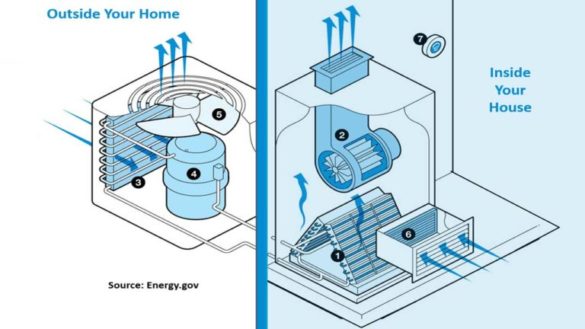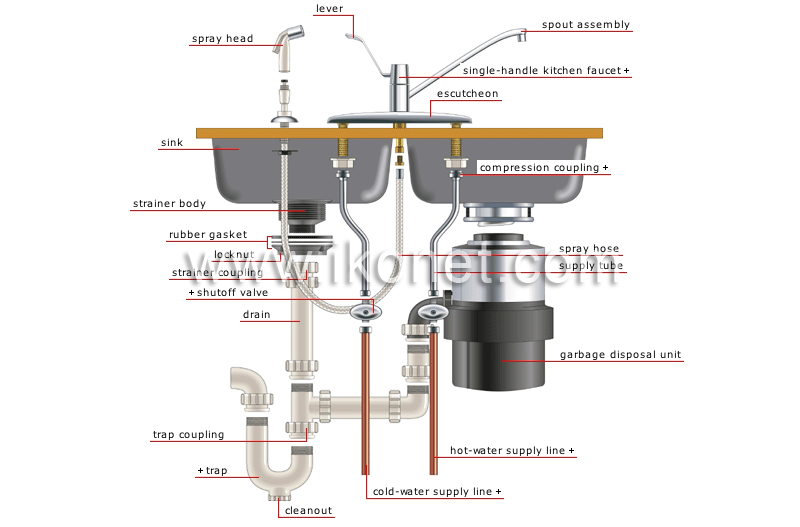This post which follows involving Understanding Your Home's Plumbing Anatomy is extremely remarkable. Read it for your own benefit and see what you think about it.

Recognizing how your home's plumbing system functions is essential for each home owner. From delivering clean water for drinking, food preparation, and bathing to safely eliminating wastewater, a properly maintained pipes system is essential for your household's health and wellness and convenience. In this thorough guide, we'll discover the elaborate network that composes your home's pipes and offer suggestions on upkeep, upgrades, and taking care of usual issues.
Introduction
Your home's plumbing system is greater than simply a network of pipelines; it's a complex system that ensures you have accessibility to tidy water and effective wastewater elimination. Understanding its components and how they work together can help you prevent pricey fixings and make sure whatever runs efficiently.
Fundamental Parts of a Plumbing System
Pipes and Tubing
At the heart of your plumbing system are the pipes and tubing that carry water throughout your home. These can be made of numerous materials such as copper, PVC, or PEX, each with its advantages in terms of resilience and cost-effectiveness.
Fixtures: Sinks, Toilets, Showers, etc.
Components like sinks, bathrooms, showers, and tubs are where water is made use of in your house. Recognizing just how these components connect to the plumbing system helps in diagnosing problems and intending upgrades.
Shutoffs and Shut-off Factors
Shutoffs regulate the circulation of water in your pipes system. Shut-off shutoffs are important during emergencies or when you need to make repair services, permitting you to separate parts of the system without interrupting water flow to the entire house.
Supply Of Water System
Key Water Line
The major water line attaches your home to the local water system or a personal well. It's where water enters your home and is distributed to various fixtures.
Water Meter and Stress Regulatory Authority
The water meter actions your water usage, while a pressure regulatory authority makes certain that water streams at a risk-free pressure throughout your home's plumbing system, stopping damage to pipes and components.
Cold Water vs. Warm water Lines
Comprehending the distinction between cold water lines, which provide water straight from the primary, and hot water lines, which carry heated water from the water heater, aids in repairing and planning for upgrades.
Drainage System
Drain Pipes Water Lines and Traps
Drain pipelines bring wastewater away from sinks, showers, and commodes to the sewage system or sewage-disposal tank. Traps protect against sewage system gases from entering your home and additionally catch debris that can create blockages.
Ventilation Pipelines
Ventilation pipes enable air right into the drainage system, stopping suction that could slow down water drainage and trigger catches to empty. Correct ventilation is crucial for preserving the integrity of your pipes system.
Significance of Proper Drain
Guaranteeing correct drainage prevents back-ups and water damages. Frequently cleansing drains and preserving catches can avoid costly repairs and expand the life of your plumbing system.
Water Heater
Types of Hot Water Heater
Water heaters can be tankless or typical tank-style. Tankless heating units warmth water as needed, while containers store heated water for instant usage.
Updating Your Plumbing System
Reasons for Updating
Upgrading to water-efficient components or changing old pipes can enhance water high quality, lower water bills, and enhance the worth of your home.
Modern Pipes Technologies and Their Benefits
Check out modern technologies like clever leakage detectors, water-saving toilets, and energy-efficient water heaters that can save cash and lower environmental effect.
Price Considerations and ROI
Determine the ahead of time costs versus long-lasting financial savings when considering pipes upgrades. Many upgrades pay for themselves via reduced utility costs and less repair work.
Exactly How Water Heaters Link to the Pipes System
Understanding exactly how hot water heater attach to both the cold water supply and hot water distribution lines assists in detecting issues like insufficient hot water or leaks.
Upkeep Tips for Water Heaters
Regularly flushing your water heater to eliminate debris, checking the temperature level setups, and inspecting for leaks can prolong its life-span and boost power efficiency.
Common Plumbing Issues
Leaks and Their Causes
Leaks can happen as a result of maturing pipelines, loosened fittings, or high water stress. Attending to leakages without delay stops water damages and mold and mildew development.
Obstructions and Blockages
Blockages in drains pipes and commodes are usually brought on by purging non-flushable things or a buildup of grease and hair. Using drainpipe displays and bearing in mind what decreases your drains pipes can stop obstructions.
Indicators of Pipes Issues to Expect
Low water pressure, slow drains, foul odors, or unusually high water bills are indicators of possible pipes troubles that need to be resolved quickly.
Plumbing Maintenance Tips
Regular Evaluations and Checks
Schedule annual pipes inspections to capture concerns early. Try to find indications of leakages, deterioration, or mineral build-up in faucets and showerheads.
DIY Upkeep Tasks
Basic tasks like cleansing tap aerators, looking for commode leaks using dye tablet computers, or insulating revealed pipelines in cold environments can avoid significant pipes issues.
When to Call a Specialist Plumbing
Know when a pipes problem requires expert experience. Trying complicated repairs without appropriate understanding can lead to even more damage and greater repair work expenses.
Tips for Reducing Water Usage
Simple routines like fixing leakages promptly, taking much shorter showers, and running full tons of washing and meals can preserve water and lower your utility costs.
Eco-Friendly Plumbing Options
Take into consideration sustainable pipes products like bamboo for flooring, which is durable and green, or recycled glass for countertops.
Emergency Readiness
Steps to Take Throughout a Pipes Emergency situation
Know where your shut-off shutoffs are located and exactly how to switch off the water in case of a burst pipe or significant leakage.
Importance of Having Emergency Situation Calls Useful
Maintain call information for regional plumbing professionals or emergency solutions easily available for quick action throughout a plumbing dilemma.
Ecological Impact and Conservation
Water-Saving Fixtures and Home Appliances
Mounting low-flow taps, showerheads, and toilets can substantially lower water use without giving up efficiency.
DIY Emergency Situation Fixes (When Applicable).
Momentary solutions like using duct tape to patch a leaking pipe or putting a container under a trickling tap can decrease damage until an expert plumbing technician shows up.
Conclusion.
Understanding the anatomy of your home's plumbing system encourages you to keep it successfully, conserving time and money on repair work. By complying with routine maintenance routines and staying educated concerning contemporary plumbing technologies, you can guarantee your pipes system runs successfully for years to find.
HOW YOUR PLUMBING SYSTEM WORKS
Which Pipes Do What?
- Blue lines = fresh water supply entering the building
- Red lines = hot water supply entering the building
- Grey lines = pipes carrying waste away from the building and venting pipes carrying gases away from the building (through the roof)
YOUR MAIN PLUMBING SYSTEMS
There are two main plumbing systems that support your home s basic plumbing needs one that brings clean water into your home, and one that sends dirty water away from your home. Connected to the toilet, bath, shower, and other faucets in your home, these two systems keep your water flowing in the right directions.
ACCESSING FRESH WATER
Fresh and clean water is brought into your home through the main water supply line . Filtered through one pipe, this water is pressured to flow into the various fixtures in your home at any given time.
This water can be sourced from a well located on your property, a pond or river (mostly cottages), or, as in most cases, from the city s municipal water treatment centre. However, it is important to note that water that is untreated, such as the water siphoned from ponds or rivers, may not be safe to drink. Personal water supplies always need to be treated for hardness and contaminants before consumed.
MUNICIPAL WATER SUPPLIES
- Improve taste and odour
- Remove sediment
- Eliminate hardness
- Reduce chlorine
COLD WATER SUPPLY VS. HOT WATER SUPPLY
Cold water flows into your home or building through the service line, which then distributes hot or cold water to your fixtures. This line is most commonly run through a central column that runs floor to floor. Hot water runs in short and straight pipes as the longer the pipeline, the more heat that will be lost in the transfer. Having shorter pipes also allows residents to access hot water more quickly.
WASTE WATER SYSTEM
Your wastewater system is divided into two parts pipes that send wastewater away from your home and venting pipes that send sewer gas away from your home. Sewage water travels through pipes that flush the water and waste towards local sewers that are operated and managed by your city or town. Most sewer systems rely on gravity to move the wastewater to where it needs to go.
The further away from your toilet or sink, the larger wastewater pipes become. This allows for waste to be disposed of from various parts of your home or business at once without pipe blockages. The angle and flow of these pipes are also essential for keeping your waste pipes clear of build up.
https://harrisplumbing.ca/how-your-home-plumbing-system-works/

Do you appreciate reading up on Exploring Your Homes Plumbing Anatomy? Make a review down the page. We'd be pleased to hear your opinion about this blog posting. We are looking forward that you visit us again later on. So long as you appreciated our article if you please don't forget to share it. Thank you for going through it.
Click Here
Comments on “A Guide to Your Property's Plumbing System Anatomy”